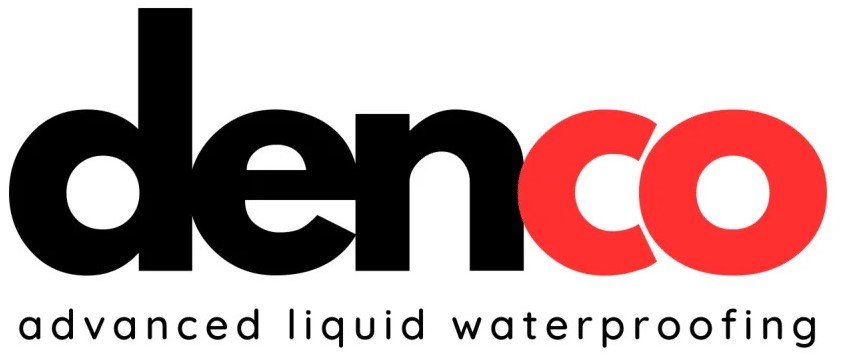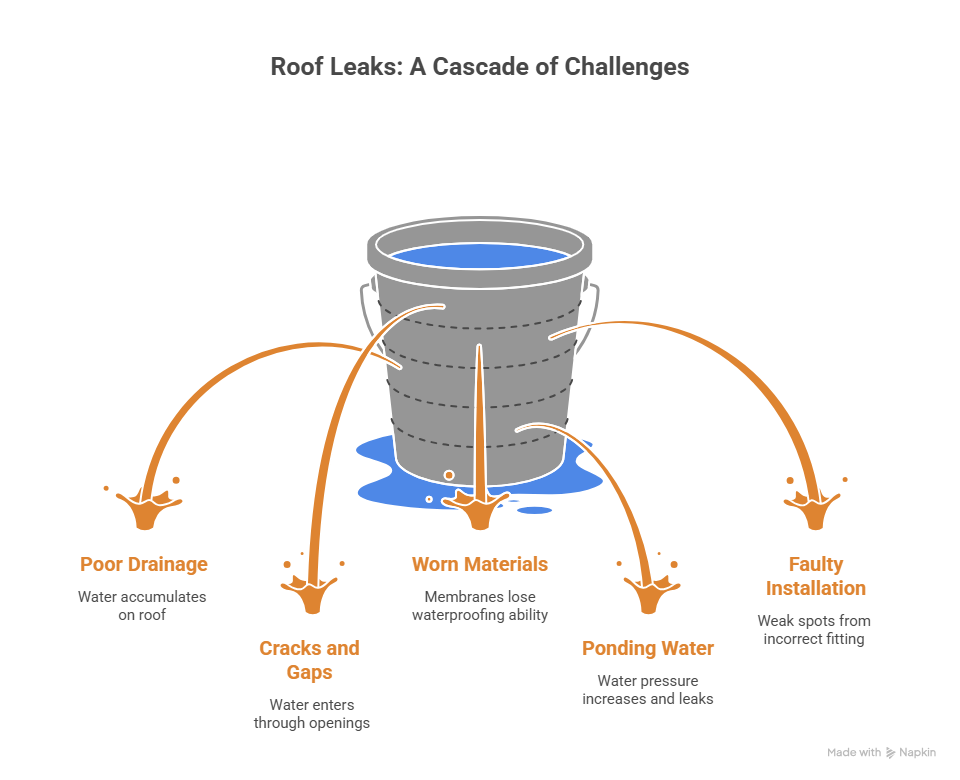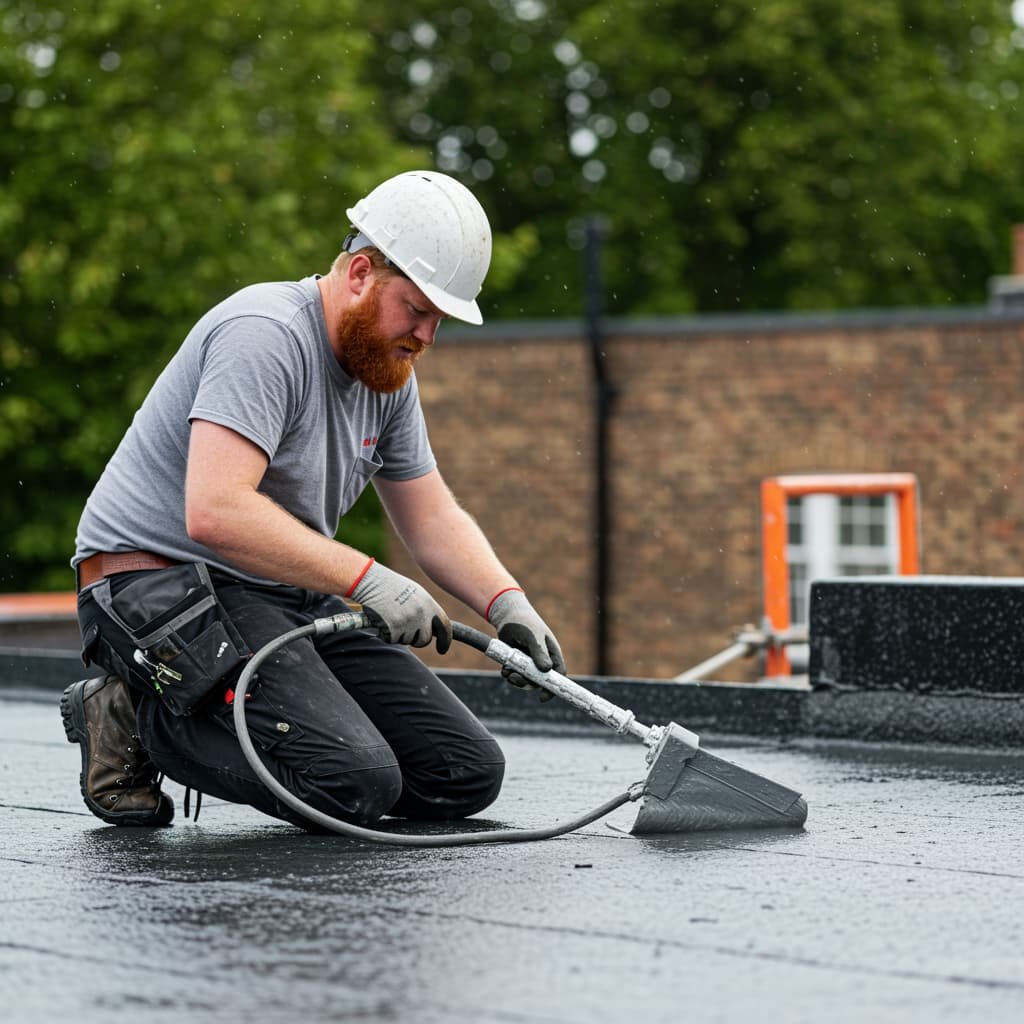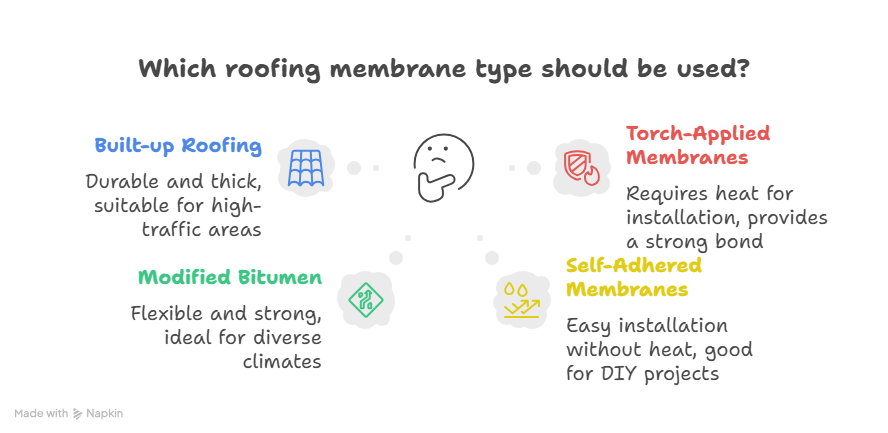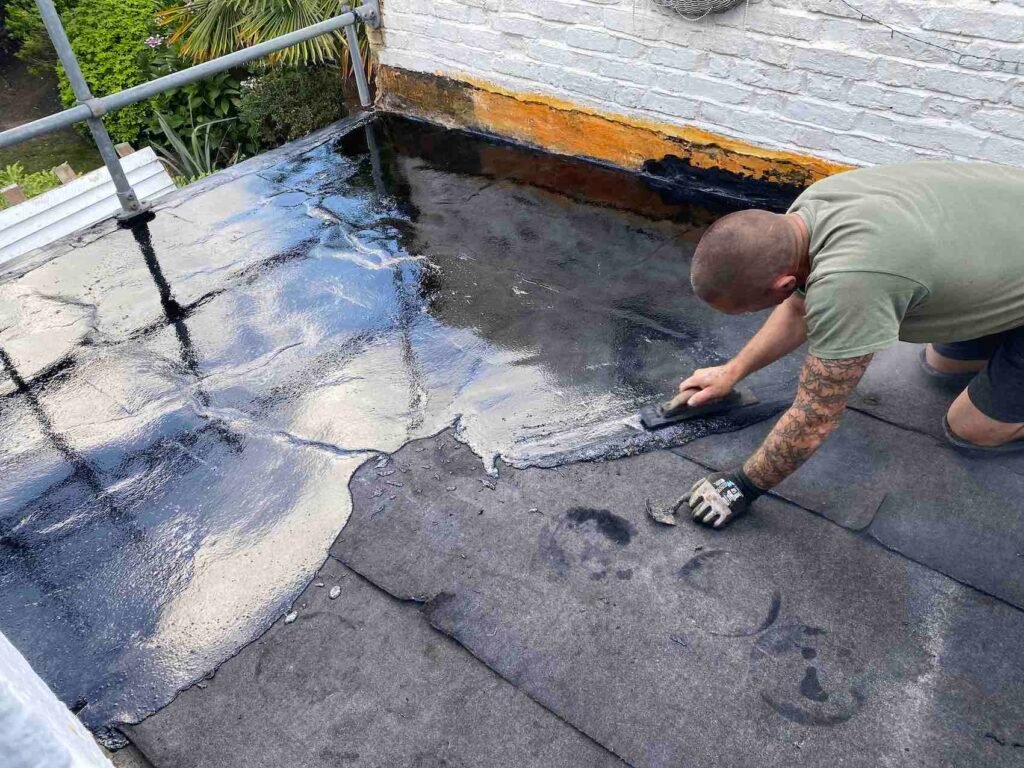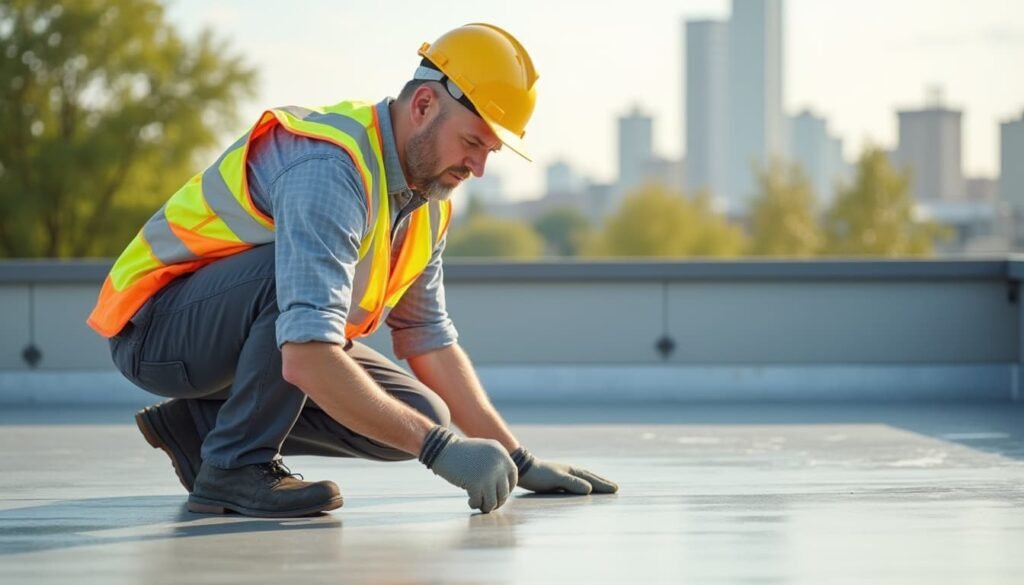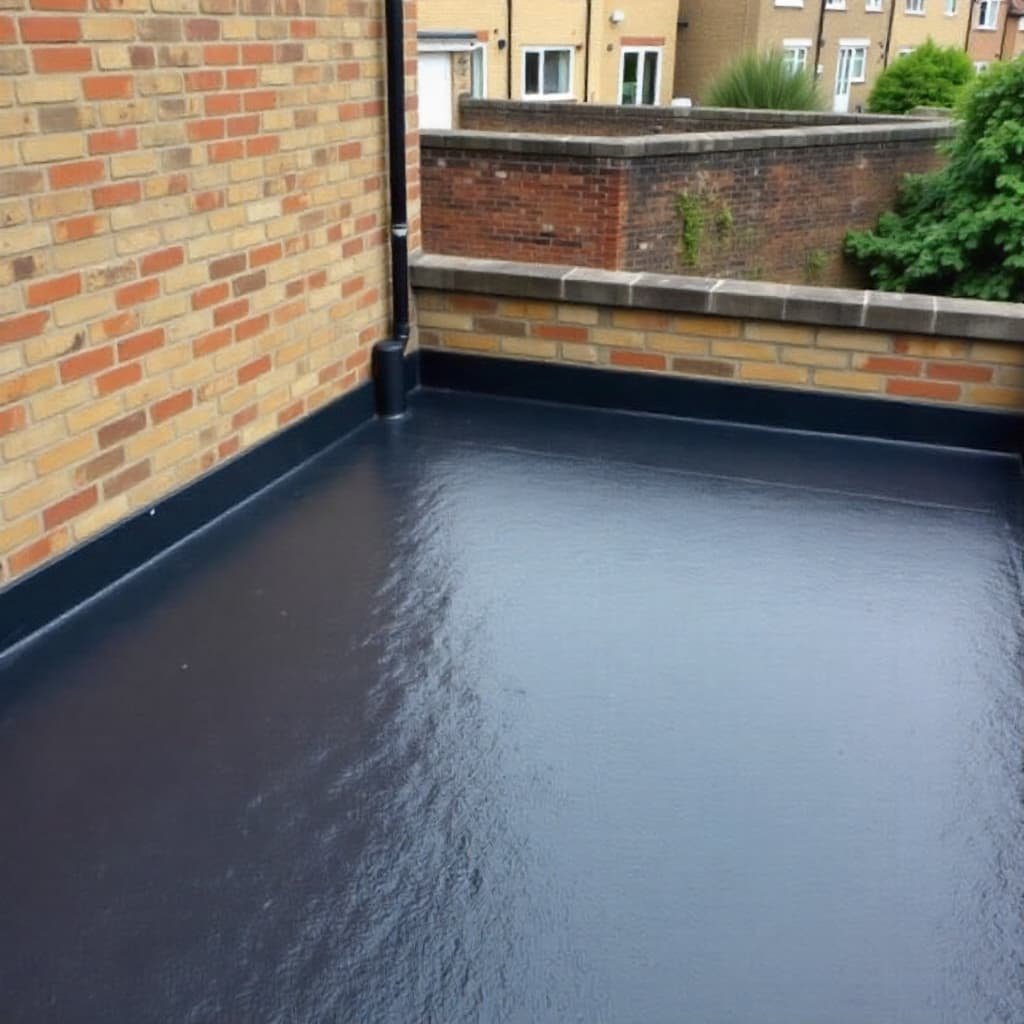
Contents
Our Services
Liquid waterproofing
What Client Say
I would just like to say a big thank you to the Denco team for the work they recently did on our roof, such a great finish. They repaired the old asphalt and covered it with a lovely new grey liquid coating. Leaving the premises very clean and tidy, we are so pleased with the end result. Thank you again guys.
Thank you to Lee and his colleagues from Denco Waterproofing for the outstanding job that they have completed on our balcony. Very impressed with there standard of workmanship and will definitely be having them back to replace the flat roof on our extension soon.
Great work by the Denco Waterproofing lads, very hard working, extremely tidy and the attention to detail was top class. Well done job all round. Many thanks.
Need help?
Don't hesitate to contact us
Send a message
Is your London flat roof ready to face the next heavy rain? Water damage can quickly turn a simple leak into costly repairs.
But there’s a smart, effective way to protect your home: asphalt waterproofing. This method creates a strong barrier that keeps water out, saving you money and stress down the line. Learn how asphalt waterproofing works. It’s the best way to keep your flat roof dry and strong year after year.
Keep reading to learn how you can safeguard your London flat roof before water damage takes hold.
Why Water Damage Threatens London Flat Roofs
London’s flat roofs face constant challenges from water damage. Rain, cold weather, and pollution all wear down roofing materials. Flat roofs do not shed water quickly like pitched roofs. Water can pool and seep into cracks. This leads to leaks and structural problems. Asphalt waterproofing protects flat roofs. It helps prevent water damage before it begins. Knowing why water damage is a risk for London flat roofs is crucial for keeping your property safe and dry.
Common Causes Of Water Damage
Water damage often begins with small issues that grow over time. London’s climate increases the risk because of frequent rain and temperature changes. Flat roofs are especially vulnerable because water can collect on the surface. Here are common causes:
- Poor drainage: Blocked gutters and drains cause water to pool on the roof.
- Cracks and gaps: Weather and building movement create openings where water enters.
- Worn roofing materials: Old or damaged membranes lose their waterproofing ability.
- Ponding water: Flat roofs without proper slope hold water, increasing pressure and leaks.
- Faulty installation: Incorrect fitting of roofing layers leads to weak spots.
These problems allow water to penetrate the roof’s surface. Over time, water seeps deeper into the structure, causing decay. Regular inspection and maintenance are vital to spot these causes early.
Impact On Property Value And Safety
Water damage affects both the safety and value of your flat roof property. Leaks cause mould and rot inside walls and ceilings. This can create health hazards for residents. Structural wood and metal parts weaken over time. This increases risk of collapse or costly repairs.
Property value drops if water damage is visible or reported. Buyers avoid homes with roofing problems. Insurance claims may rise, causing higher premiums or refusal to cover damages.
- Health risks: Mould spores cause allergies and respiratory problems.
- Structural damage: Rotting timber and corroded metal reduce building stability.
- Increased repair costs: Minor leaks become major repairs without proper care.
- Reduced market value: Damaged roofs lower resale price and appeal.
- Insurance issues: Claims denied or premiums raised due to poor maintenance.
Protecting your flat roof from water damage maintains safety and preserves property value. Asphalt waterproofing creates a strong barrier against leaks. This simple step reduces long-term risks and expenses.
Benefits Of Asphalt Waterproofing
Keeping your London flat roof safe from water damage is key to your home’s value and comfort. Asphalt waterproofing offers a reliable solution that guards against leaks and moisture buildup. Its benefits make it a popular option for flat roofs. This is especially true in cities with changing weather. Understanding asphalt waterproofing benefits helps you protect your property over time.
Durability And Longevity
Asphalt waterproofing is known for its strong durability and long lifespan. It forms a tough, flexible barrier that resists cracks and damage caused by weather changes. This makes it ideal for London’s climate, which can be wet and cold.
The material can handle:
- Heavy rain and standing water without breaking down.
- UV rays can cause other materials to weaken.
- Temperature changes without losing flexibility.
These qualities ensure your roof stays protected for many years. Asphalt waterproofing often lasts 15 to 20 years or more with proper maintenance.
| Feature | Benefit |
| Flexibility | Prevents cracks from temperature shifts |
| Water Resistance | Stops water penetration even under heavy rain |
| UV Protection | Resists sun damage and ageing |
| Strong Adhesion | Stays firmly on your roof surface |
Regular tasks, like removing debris and checking for damage, can help it last longer. Asphalt waterproofing is a smart choice for flat roofs. These factors make it effective.
Cost-effectiveness Compared To Alternatives
Asphalt waterproofing provides excellent protection without a high price tag. Many flat roof owners choose it due to its affordable installation costs and low maintenance needs. Compared to other waterproofing materials, asphalt is budget-friendly.
Here’s how asphalt stacks up against popular alternatives:
| Material | Initial Cost | Maintenance Cost | Average Lifespan |
| Asphalt | Low | Low | 15-20 years |
| EPDM Rubber | Medium | Medium | 20-30 years |
| Liquid Waterproofing | Medium | High | 10-15 years |
| Bitumen Membrane | Medium | Medium | 15-20 years |
Asphalt’s low cost and reliable protection lower your total roof expenses. It reduces the risk of water damage that leads to expensive repairs.
- Quick installation saves time and labour costs.
- Less frequent repairs compared to some other materials.
- Easy to renew or patch without major work.
This cost-effectiveness makes asphalt waterproofing an ideal option for many London flat roof owners aiming to protect their investment smartly.
Choosing The Right Asphalt Waterproofing System
Picking the right asphalt waterproofing system is key. It helps keep your London flat roof safe from water damage. The right system stops leaks, resists weather, and lasts many years. London’s climate has unique challenges, so selecting the best material is important. Choosing the right asphalt membrane for your roof is easier when you understand your options and local weather.
Types Of Asphalt Membranes
Asphalt membranes are the most common materials for flat roof waterproofing. They form a strong, flexible layer that prevents water from entering the building. There are several types of asphalt membranes, each with different features and benefits.
- Built-up Roofing (BUR): Made from multiple layers of asphalt and reinforcing fabrics. It is thick and very durable.
- Modified Bitumen (MB): Asphalt mixed with rubber or plastic polymers for extra flexibility and strength. It often comes in rolls.
- Self-Adhered Membranes: These have a sticky backing that makes installation easier without using heat.
- Torch-Applied Membranes: Installed with a flame to melt the asphalt and stick the membrane to the roof.
Modified bitumen membranes suit many London flat roofs due to their flexibility and strong protection. Built-up roofing is best for very flat roofs with heavy traffic. Choose based on roof type, budget, and installation ease.
Factors To Consider For London Climates
London’s weather affects flat roofs in many ways. Rain, cold winters, and mild summers all influence waterproofing needs. Choose asphalt waterproofing that can handle this climate well.
- Heavy Rainfall: London has frequent rain, so membranes must be fully waterproof and resistant to pooling water.
- Temperature Changes: Asphalt must expand and contract without cracking during cold and warm weather.
- UV Exposure: Even in cloudy London, UV rays can damage roofing materials. UV-resistant membranes last longer.
- Wind Resistance: Strong winds in some areas require membranes to stay firmly attached without lifting.
Consider these factors when selecting an asphalt system:
- Durability: Must resist weather damage and maintain strength over years.
- Flexibility: To handle temperature changes without cracking.
- Waterproofing: Prevent water entry even during heavy rain.
- Installation: Choose a method suitable for your roof and local conditions.
Proper maintenance also extends the roof’s life. Regular checks help spot damage early. Choose membranes designed for London’s damp, cool climate to protect your flat roof effectively.
Step-by-step Asphalt Waterproofing Process
Keeping your London flat roof safe from water damage is vital. It helps maintain your home’s value and comfort. Asphalt waterproofing provides a reliable barrier against rain and moisture. Understanding the asphalt waterproofing process helps you protect your roof. This keeps it dry for years.
Surface Preparation Techniques
Proper surface preparation is the foundation of effective asphalt waterproofing. The roof must be clean and dry before applying any material. Dirt, dust, debris, and old coatings can prevent the asphalt from sticking well.
Key steps in surface preparation include:
- Cleaning: Remove leaves, dust, and loose materials with a broom or blower.
- Repairing: Fix cracks, holes, or damaged areas using roofing cement or patch materials.
- Drying: Allow the surface to dry completely; moisture can stop the asphalt from bonding.
- Priming: Apply a primer coat to improve adhesion between the roof and the asphalt layer.
The table below shows common surface problems and solutions:
| Problem | Solution |
| Cracks | Fill with roofing cement or patch |
| Loose debris | Clean with a broom or blower |
| Moisture | Dry thoroughly before application |
| Old coatings | Remove or roughen the surface |
Skipping surface preparation can cause the waterproofing to fail quickly. Take time to prepare well for lasting roof protection.
Application Methods
Applying asphalt waterproofing correctly ensures a strong, waterproof layer. The method depends on the product type and roof condition. Two main types of asphalt application are:
- Hot applied: Asphalt is heated to a liquid state and spread evenly on the roof.
- Cold applied: Asphalt-based liquid products are rolled or sprayed at room temperature.
Steps for application:
- Start at the lowest roof point for proper drainage.
- Use a brush, roller, or squeegee to spread asphalt uniformly.
- Apply multiple coats, allowing each layer to set before the next.
- Embed reinforcing fabrics or mats between layers if extra strength is needed.
Application tips:
- Work in dry, warm weather for the best results.
- Wear protective gloves and clothing.
- Follow manufacturer’s instructions for temperature and thickness.
Use this quick checklist during the application:
| Task | Action |
| Surface dry? | Yes, no moisture present |
| Even spread? | Check for smooth, full coverage |
| Layers applied? | At least two for durability |
| Reinforcement used? | As needed for extra strength |
Curing And Inspection
After application, asphalt waterproofing must cure fully. Curing allows the material to harden and form a solid barrier. The time varies based on product type and weather. Usually, curing takes 24 to 48 hours.
Steps for curing and inspection:
- Keep roof dry: Avoid rain or water contact during curing.
- Temperature control: Maintain warm, dry conditions if possible.
- Visual inspection: Look for bubbles, cracks, or thin spots.
- Touch test: The surface should feel firm and no longer sticky.
- Water test: Spray water to check for leaks or absorption.
Proper curing and inspection ensure your roof stays protected against water damage. Early detection of issues lets you fix problems before they grow.
Maintenance Tips For Flat Roof Protection
Protecting your London flat roof from water damage requires ongoing care. Asphalt waterproofing offers a strong defense against leaks and dampness. Maintenance is key to keeping this protection effective. Simple, regular actions can extend your roof’s life and save money on repairs. Here are some maintenance tips to protect your flat roof. This will help you avoid costly issues and keep your home safe.
Regular Inspections
Regular inspections catch small issues before they become big problems. Check your flat roof at least twice a year, ideally in spring and autumn. Look for:
- Cracks or splits in the asphalt surface
- Pooling water or blocked drainage
- Loose or damaged flashing around vents and edges
- Debris like leaves or branches
- Signs of mould or algae growth
Use a checklist to stay organised during inspections.
Use a ladder safely to access your roof. If unsure, hire a professional for detailed inspections. Early detection prevents leaks and water damage.
Addressing Minor Repairs Promptly
Small roof problems worsen fast if ignored. Fix minor repairs quickly to keep asphalt waterproofing strong. Common minor issues include:
- Small cracks or splits in the asphalt layer
- Loose or damaged flashing around edges
- Minor pooling areas are causing soft spots
- Loose gravel or granules on the surface
Repair tips:
- Clean the damaged area with a brush to remove dirt and debris.
- Use asphalt patching compound or roofing cement for cracks and splits.
- Replace or reseal flashing to stop water entry at edges.
- Fill low spots with roofing material to improve drainage.
Track repairs in a maintenance log. Note the date, location, and action taken. This helps spot recurring issues.
Ignoring minor problems leads to leaks, mold, and costly repairs. Timely action extends your flat roof’s life and keeps your home dry.
Hiring Professionals Vs. Diy Asphalt Waterproofing
Protecting your London flat roof from water damage is essential. Asphalt waterproofing offers a strong shield against leaks and moisture. Hiring professionals or doing it yourself affects the quality and durability of waterproofing. Both options have pros and cons. Understanding these helps make the right choice for your home and budget.
Risks And Challenges Of Diy
DIY asphalt waterproofing might seem cheaper and straightforward. Many homeowners try it to save money. Yet, several risks and challenges come with this choice.
- Lack of experience: Applying asphalt requires skill. Incorrect application can cause weak spots.
- Safety concerns: Handling hot asphalt can lead to burns or accidents without proper gear.
- Wrong materials: Choosing the wrong asphalt or tools harms the roof’s protection.
- Weather issues: Rain or cold can ruin the sealing during application.
- Time-consuming: The process takes longer without experience, delaying roof protection.
Failures in any step reduce the lifespan of your roof. This means more repairs and higher costs later.
Benefits Of Professional Services
Hiring professionals for asphalt waterproofing improves results and saves stress. Experts bring skills, tools, and knowledge for a durable finish.
- Proper surface preparation: Pros clean and repair the roof before applying asphalt.
- Quality materials: Professionals use the right type of asphalt for London’s climate.
- Fast and efficient: Experienced teams complete the job quickly, avoiding weather problems.
- Safety measures: Experts follow safety rules to prevent accidents.
- Warranty and support: Many companies offer guarantees, ensuring peace of mind.
Advantages of hiring professionals at a glance:
| Benefit | Description |
| Long-lasting protection | Correct application extends roof life |
| Cost-effective | Fewer repairs reduce overall expenses |
| Expert advice | Guidance on maintenance and care |
| Clean and neat work | Professionals leave no mess behind |
Choosing professionals reduces risks. It ensures your London flat roof stays safe from water damage for years.
Reach out to our team for support or inquiries about Protect Your London Flat Roof from Water Damage With Asphalt Waterproofing
Waterproofing from Denco Liquid Waterproofing gives your roof a strong shield against leaks and dampness. This helps keep your home dry and safe all year long. By doing regular checks and taking care of your roof, you can catch small problems before they become big ones. A little care now can save you a lot of money on repairs later!
When you choose asphalt waterproofing, you’re picking a long-lasting and cost-effective solution. Your roof deserves to stay in great shape. Keep it dry. Keep it strong. Let Denco Liquid Waterproofing help you take care of it.
All You Need to Know
What Is Asphalt Waterproofing For Flat Roofs?
Asphalt waterproofing uses a bitumen-based coating to seal flat roofs. It prevents water penetration, protecting your London flat roof from leaks and damage. This method is durable, cost-effective, and ideal for harsh weather conditions common in London.
How Does Asphalt Protect Flat Roofs From Water Damage?
Asphalt forms a seamless, waterproof barrier that stops rainwater from seeping into the roof structure. It fills cracks and joints, preventing moisture accumulation and structural damage. This protection extends your roof’s lifespan and reduces costly repairs.
How Often Should Asphalt Waterproofing Be Applied?
Asphalt waterproofing typically lasts 8 to 15 years. Regular inspections every 3 to 5 years help identify wear or damage early. Reapplication depends on the roof condition and weather exposure to maintain optimal waterproofing.
Can Asphalt Waterproofing Withstand London’s Weather?
Yes, asphalt waterproofing is highly effective against London’s frequent rain and fluctuating temperatures. It resists water, UV rays, and temperature changes, ensuring your flat roof stays protected year-round.
